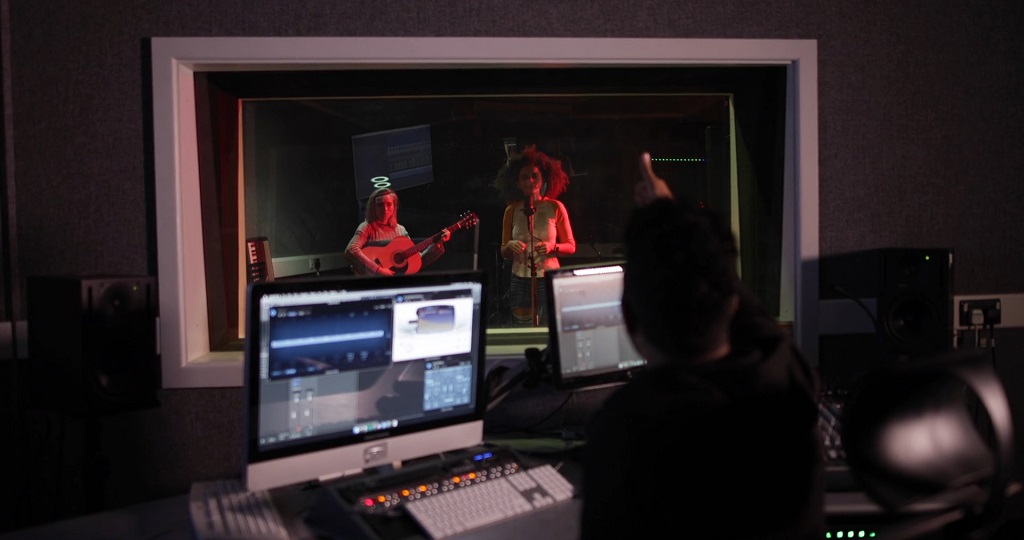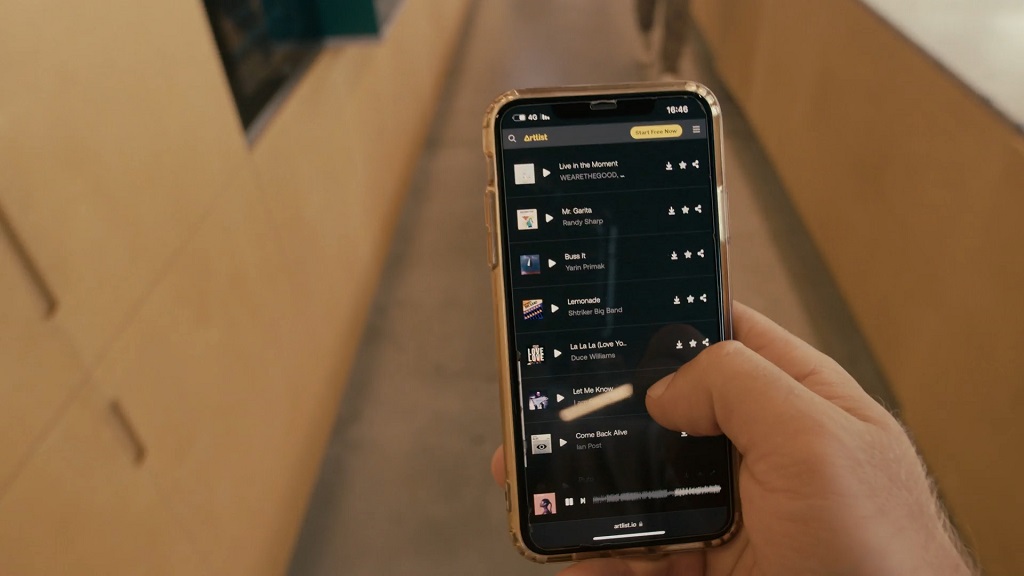Creating music has never been more accessible, yet sustaining a career as a musician has never been more challenging.
Affordable technology and digital platforms have opened doors for countless creators, but the same forces that enable entry also make survival extremely difficult.
Technological progress has democratized production and distribution while simultaneously devaluing music as a commodity.
What results is a paradox: the dream of becoming an artist is within reach for anyone, but making a livelihood remains elusive.
The Democratization of Music Creation
Making music today feels more accessible than at any other point in history.
Tools that once required professional studios and large budgets are now available to anyone with a modest setup.
As a result, more voices are entering the scene, pushing creativity forward while also making competition fierce.
To understand how this shift unfolded, it helps to examine two major forces shaping the modern entry point into music: lowered barriers and the rise of mass participation.
Lower Barriers to Entry

Affordable software and hardware have rewritten the rules of production.
Artists who once needed thousands of dollars to book studio time can now achieve similar results at home.
A combination of digital tools and global distribution channels has created a gateway that previous generations never enjoyed. Key developments include:
- Digital Audio Workstations (DAWs): Programs such as Ableton Live, Logic Pro, and FL Studio allow creators to record, edit, and finalize tracks with a professional polish.
- Home Recording Gear: High-quality microphones, interfaces, and monitors are available at prices accessible to hobbyists and emerging professionals alike.
- Distribution Platforms: SoundCloud, Bandcamp, and TikTok, through TikTok promotion best practices, serve as launchpads where songs can reach global audiences instantly, bypassing traditional gatekeepers.
A laptop and an internet connection are often enough to release music to the world.
For some, this means an open door to opportunity, yet for others, it means entering a highly competitive ecosystem.
The “Everyone’s an Artist” Era
Another defining characteristic of modern music culture is the sheer number of people producing songs.
Accessible tools such as GarageBand and AI-driven platforms make music creation feel almost effortless.
The result is an overwhelming flood of new uploads every day.
Chartmetric data shared through Music 3.0 paints the picture clearly: over 3,600 new artists upload their work daily.
While this offers audiences variety, it also saturates digital spaces, making it extremely difficult for artists to gain attention.
Highlights of this trend include:
- Pre-made samples and AI-powered tools let novices assemble tracks quickly, often lowering the emphasis on original composition.
- Viral challenges and snippets allow newcomers to gain exposure overnight, though sustaining momentum proves harder.
- With thousands entering daily, listeners are overwhelmed, and quality work struggles to rise above the flood.
Opportunity exists in abundance, but so does noise, creating a paradox where discovery becomes the hardest part of the process.
The Collapse of the Traditional Revenue Model
A major reason survival has become harder for musicians lies in the breakdown of income streams that once sustained entire careers.
Recorded music, once the lifeblood of the industry, has lost much of its value.
In its place, a fragmented and often exploitative economy emerged, where recordings serve more as promotional tools than as products in themselves
The Fall of Recorded Music as a Livelihood
Royalties, album sales, and physical formats previously offered reliable income.
That era has faded, replaced by pennies per stream anthe d declining influence of organizations tasked with protecting artist rights.
Musicians who once relied on record sales now face financial instability.
The decline can be seen in:
- CDs and vinyl exist, but as niche markets, not dominant forces.
- Fractions of a cent per play make sustainable earnings nearly impossible without millions of streams.
- Unions and rights societies hold less negotiating power in a tech-driven system.
Recorded music alone rarely pays the bills, forcing artists to seek alternative sources of revenue.
Music as “Free” or a Marketing Tool

The idea of free access to music began with Napster and never truly disappeared.
Platforms such as YouTube and Spotify cemented the perception that recordings should cost little or nothing.
Artists often resort to giving away their work, using it as a tool to sell something else, such as tours or merchandise.
Examples include:
- Prince and Radiohead distributed albums for free, framing recordings as promotional giveaways.
- Services pay minimal rates, pushing musicians to rely on exposure rather than direct earnings.
- Recordings serve more as advertising than as primary income sources.
For many musicians, recorded tracks are now simply marketing collateral, not the product itself.
Data Doesn’t Lie: Surviving the Industry is Brutal
Numbers tell a stark story about the odds musicians face today.
More artists are entering the system than ever before, yet very few achieve even a modest career.
The dream is available to all, but the probability of lasting success is razor-thin.
Chartmetric’s Breakdown of Artist Success Rates

Research from Music 3.0 shows how difficult it is to rise in the current climate.
The sheer scale of new entrants versus those who make it demonstrates the imbalance.
Key findings include:
- 1.3 Million Artists in 2023: Added to global platforms within a single year.
- 0.05% Reach Mid-Level: Only a handful achieve consistent recognition and income.
- 0.25% Reach Mainstream or Superstar Status: A microscopic percentage becomes widely known.
- 87.6% Remain Undiscovered: Most never escape obscurity.
These figures highlight the near impossibility of building stability without extraordinary breaks or strong financial backing.
The Myth of Viral Success
Social media platforms encourage the idea that one viral hit can launch a sustainable career.
In practice, virality rarely translates into long-term stability.
A closer look reveals:
- Viral moments often fade quickly, leaving little infrastructure for growth.
- Most stars who rise quickly already have industry support or fall within the “mainstream” tier.
- Countless creators chase virality, yet few convert it into lasting careers.
A clip going viral on TikTok may bring recognition, but it seldom guarantees financial security or professional longevity.
The “Healthy” Industry That Ignores Musicians
Observers often point to rising streaming revenues as evidence of a thriving industry. At the surface level, the numbers appear promising.
Yet when examined more closely, those gains rarely reach the people who actually make the music.
Instead, labels, distributors, and tech companies absorb most of the benefits, leaving musicians with shrinking returns.
The Misleading Metrics of Success

Industry reports highlight billions in revenue generated by streaming platforms. On paper, the business looks healthier than ever.
For creators, however, the picture is grim. Main issues include:
- Labels and platforms capture most of the money.
- Even as global profits rise, per-artist earnings fall.
- Growth at the corporate level masks widespread financial instability for musicians.
The appearance of success hides the truth that creators themselves are struggling more than ever.
The Rise of the Middleman Economy
A new network of intermediaries controls much of music distribution.
Aggregators, AI-generated music, and label consolidation all shape the market. Artists often lose both artistic and financial control as a result.
Elements of this trend include:
- Services that distribute songs to Spotify, Apple Music, and others take cuts while adding little creative value.
- Computer-generated tracks compete for space and revenue, diluting listener attention.
- Label mergers centralize power in fewer hands, reducing opportunities for independent musicians.
Music increasingly becomes another unit of digital content rather than a valued craft.
Critics like Ted Gioia argue this mindset strips away cultural weight, turning artistic labor into background noise in a profit-driven system.
The Bottom Line
Access to music creation has never been more open, yet the profession itself has rarely been so fragile. Musicians now face an environment where survival requires ingenuity, resilience, and structural change.
To preserve the craft, audiences, communities, and policymakers must reconsider who profits, who struggles, and what music truly means to society.
Making songs is easy, making a life through them remains the hard part.
- Grimes’ “Artificial Angels” Signals New Era of AI-Hybrid Music Production - December 5, 2025
- Jennifer Tilly Then and Now – How Hollywood’s Most Unpredictable Star Kept Winning - November 12, 2025
- Seth Rogen Movies Ranked – The Performances That Turned a Comedian Into a Star - November 11, 2025



